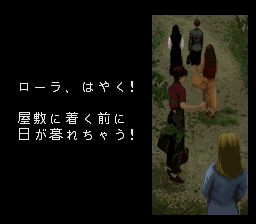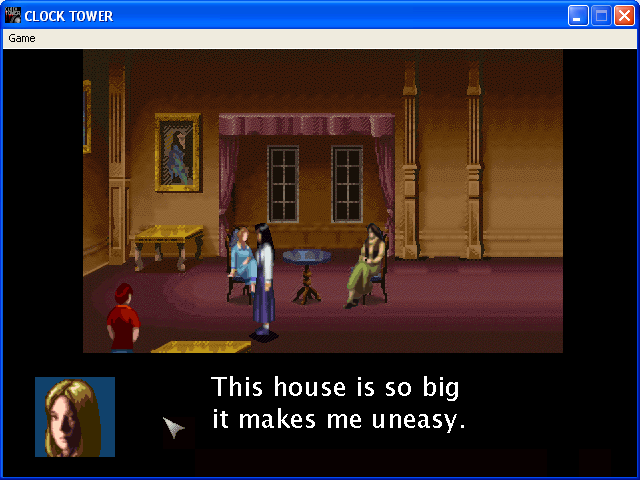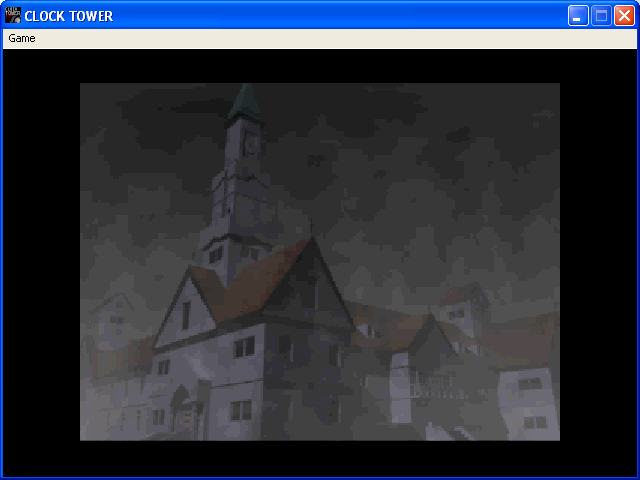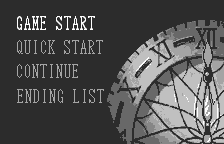Retro Replay Review
Gameplay
Clock Tower’s gameplay centers on a point-and-click interface that emphasizes exploration and puzzle-solving over combat. You guide Jennifer through the Barrows Mansion by selecting hotspots, examining objects, and choosing actions from a simple cursor menu. The lack of traditional weapons or combat mechanics heightens vulnerability, forcing you to rely on quick thinking, careful observation, and resource management to progress.
Puzzles range from inventory-based item combinations to sequence challenges that unlock new rooms or reveal critical clues. Many puzzles feel organically integrated into the mansion’s creepy decor—decoding a strange note to open a secret panel, assembling parts to activate mechanical contraptions, or finding keys that fit only the oddest locks. You’ll revisit rooms multiple times with new tools in hand, creating a sense of evolving discovery.
The most memorable gameplay element is the random Scissorman chase. He can appear without warning, shredding the silence with his giant shears. In these tense moments, you must sprint to safe zones—hiding spots or locked doors—and close them behind you. The unpredictability of Scissorman’s arrival keeps you on edge, ensuring no save is guaranteed and every click carries weight.
Graphics
Visually, Clock Tower employs pre-rendered 2D backgrounds that capture the Barrows Mansion’s sprawling, gothic atmosphere. Dimly lit hallways, peeling wallpaper, and grotesque décor details evoke a constant sense of decay. Even in its retro presentation, the game’s art style masterfully sets the stage for suspense.
Character sprites are small but expressive; Jennifer’s fearful animations when encountering danger add an emotional layer to her plight. While resolution limits prevent fine detail, judicious use of color and shadow mask the technical constraints. Moments like bloodied footprints or flickering lights remain striking despite the game’s age.
Sound design complements the visuals with subtle creaks, distant whispers, and an eerie musical score. The silence often plays as loudly as the music—ambient noises signal your proximity to danger. Scissorman’s approach is heralded by the echo of scissors, a simple cue that elicits genuine dread.
Story
Clock Tower thrusts you into the role of Jennifer, a newly adopted teenager whose hopes for a loving home quickly curdle into a nightmare. Alongside a group of fellow orphans, she arrives at the Barrows Mansion under the care of the kindly Mary and her reclusive husband, only to discover that not all is as it seems.
When Mary disappears and Jennifer’s peers begin turning up dead, the narrative takes on a survival-horror pace. Tension escalates as clues to Mary’s fate and the mansion’s dark history surface. Brief diary entries and cryptic letters flesh out a tragic backstory involving twisted obsession, ritualistic horror, and the enigmatic Barrows family legacy.
The masked Scissorman serves as both antagonist and symbol of inescapable terror. His origins remain shrouded, fueling speculation and fear. Multiple endings—ranging from a tragic “Bad Happy” outcome to a harder-to-unlock “True Happy” resolution—reward thorough exploration and add replay value to uncover the full tale.
Overall Experience
Clock Tower delivers a uniquely harrowing journey that relies on atmosphere, suspense, and psychological dread rather than action. The combination of resource-draining puzzles and unexpected chases crafts a roller-coaster of desperation and relief. Each safe room becomes a sanctuary, but the knowledge that Scissorman could strike again looms large.
For retro horror aficionados, Clock Tower remains a landmark title. Its limitations—pixelated graphics, sparse voice samples, and point-and-click controls—become strengths, fostering imagination and tension. Newcomers might find its save system punishing and its pace deliberate, but those willing to immerse themselves will find a deeply rewarding experience.
Ultimately, Clock Tower stands as a masterclass in minimalist horror design. By stripping away combat and emphasizing flight, it delivers genuine fear through vulnerability. Jennifer’s struggle to survive the Barrows Mansion resonates long after the final credits, making this adventure essential for fans of psychological terror.
 Retro Replay Retro Replay gaming reviews, news, emulation, geek stuff and more!
Retro Replay Retro Replay gaming reviews, news, emulation, geek stuff and more!









Reviews
There are no reviews yet.